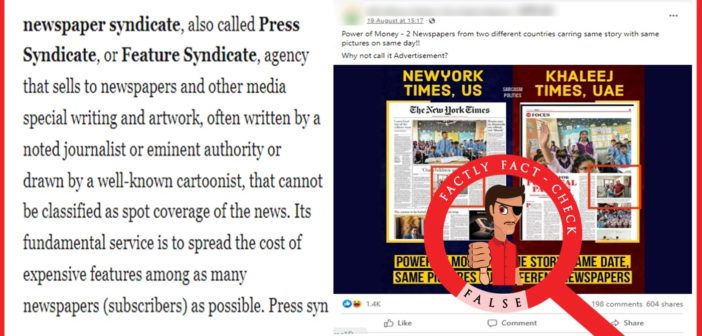In the context of the recent New York Times, Khaleej Times article about Delhi Government’s efforts to improve education at Delhi Government schools, a Facebook post is being widely shared claiming that the news papers were paid to publish the article. The viral post shows both the newspapers publishing the same story with same pictures. Let’s fact-check the claim made in the post.
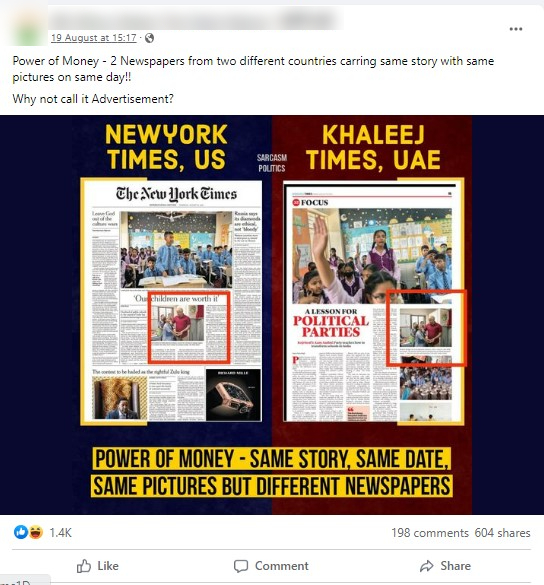
Claim: Both New York Times & Khaleej Times published the article on Delhi Government schools with the same pictures, proving these articles were sponsored.
Fact: New York times clarified that this article was not sponsored. Moreover, the article published in Khaleej times was a syndicated article, which means taking the same piece of content and republishing it, with permission, to reduce the expenses. Hence, the claim made in the post is FALSE.
First, we searched for the digital versions of both New York Times and Khaleej Times carrying this article from their official websites. They can be seen here, here, and here
We read them carefully and couldn’t find any mention of it them being sponsored articles. It is also evident that both these articles are literally the same. Both the papers mentioned the name of the writer ‘Karan Deep Singh’ at the beginning of the article (seen in green box).
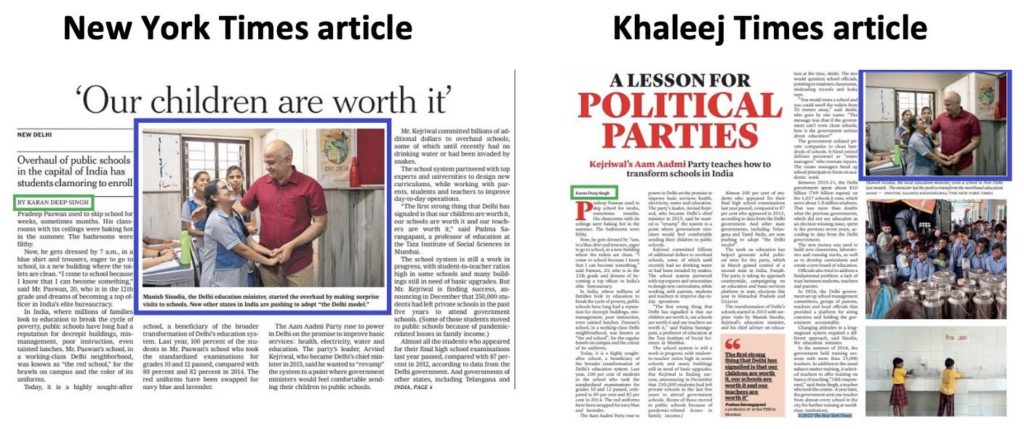
However, New York times published it on 16 August 2022 (online) and Khaleej times on 19 August 2022. Also, on Khaleej times, at the end of the article it says, “©2022 The New York Times”, which essentially means that this is a syndicated article.
What is a syndicated article?
According to Britannica, newspaper syndicate, also called Press Syndicate, or Feature Syndicate, is an agency that sells to newspapers and other media special writing and artwork, often written by a noted journalist or eminent authority or drawn by a well-known cartoonist, that cannot be classified as spot coverage of the news. Its fundamental service is to spread the cost of expensive features among as many newspapers (subscribers) as possible. Press syndicates sell the exclusive rights to a feature to one subscriber in each territory. Many writers, photographers, and graphic artists syndicate their own materials. Some newspapers with especially strong resources syndicate their own coverage, including news, to papers outside their own communities. Examples include the New York Times, with major resources in every news department, and the defunct Chicago Daily News, which was known for its foreign coverage. So, Syndicated content is literally taking the same piece of content and republishing it, with permission, on other platforms.
For instance, we found the same article on Delhi schools published on Economic Times website by crediting the original author & New York Times. Also, New York times clarified that it was not a paid article.
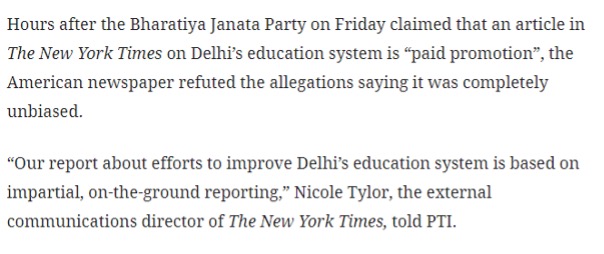
Further investigation revealed that Khaleej Times has published many such syndicated articles of New York Time previously. They can be found here, here and here.

Similar examples of syndicated articles can be seen below; This news of Indian defence attaché getting ‘Unescorted access’ to pentagon was reported by major newspapers. However, they mentioned ‘PTI’ as the author at the beginning of the article. They can be seen here, here
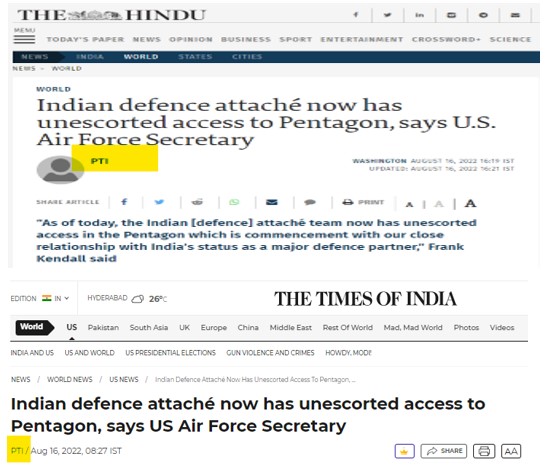
Also, at the end of the article, Business standard mentioned that the article is from syndicated feed.

To sum it up, Khaleej Times article on Delhi Government schools is published as part of its syndicated content from New York Times.


